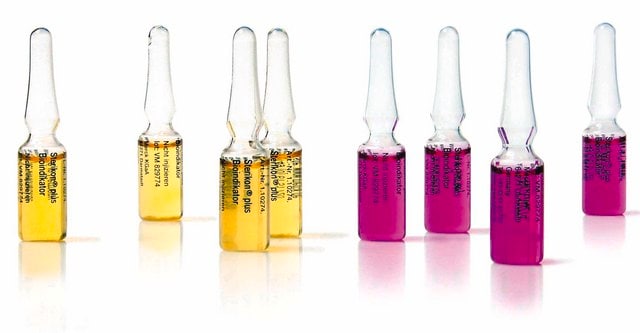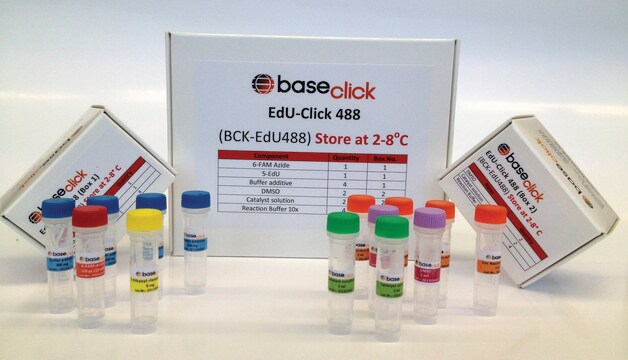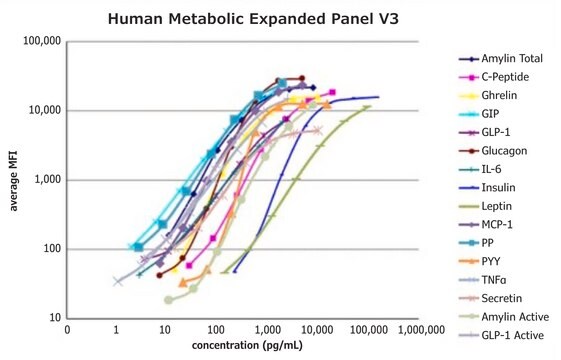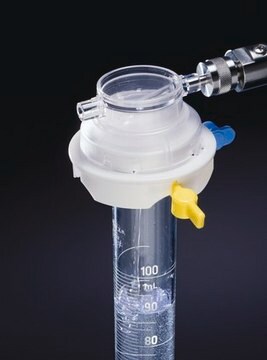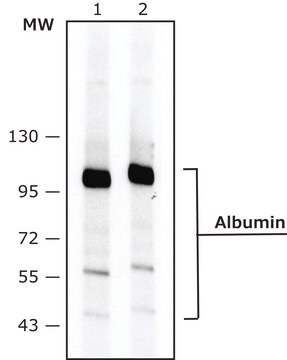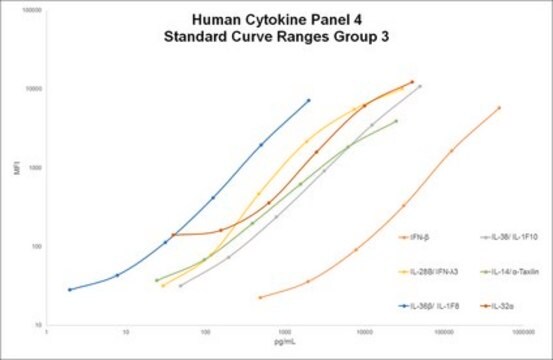EZHMWAN-65K
Human High Molecular Weight (HMW) Adiponectin ELISA
About This Item
Produits recommandés
Qualité
for protein analysis
Niveau de qualité
Description
analytes available: Adiponectin
1.56-200 ng/mL (standard curve range; see specific lot information)
Caractéristiques
accuracy 98-110%
Espèces réactives
human
Plage de mesure de la sensibilité
1.5 ng/mL
Technique(s)
ELISA: suitable
Numéro d'accès UniProt
Méthode de détection
colorimetric
fluorometric
Description générale
SIZE: 244 amino acids; 26414 Da
SUBUNIT: Homomultimer. Forms trimers, hexamers and 12- to 18-mers. The trimers (low molecular weight complexes / LMW) are assembled via non-covalent interactions of the collagen-like domains in a triple helix and hydrophobic interactions within the globular C1q domain. Several trimers can associate to form disulfide-linked hexamers (middle molecular weight complexes / MMW) and larger complexes (higher molecular weight / HMW). The HMW-complex assembly may rely aditionnally on lysine hydroxylation and glycosylation. LMW, MMW and HMW complexes bind to HBEGF, MMW and HMW complexes bind to PDGFB, and HMW complex binds to FGF2.
SUBCELLULAR LOCATION: Secreted.
TISSUE SPECIFICITY: Synthesized exclusively by adipocytes and secreted into plasma.DOMAIN:SwissProt: Q15848 The C1q domain is commonly called the globular domain.
PTM: Hydroxylated Lys-33 was not identified in PubMed:16497731, probably due to poor representation of the N-terminal peptide in mass fingerprinting. & HMW complexes are more extensively glycosylated than smaller oligomers. Hydroxylation and glycosylation of the lysine residues within the collagene-like domain of adiponectin seem to be critically involved in regulating the formation and/or secretion of HMW complexes and consequently contribute to the insulin- sensitizing activity of adiponectin in hepatocytes (By similarity). & O-linked glycans consist of Glc-Gal disaccharides bound to the oxygen atom of post-translationally added hydroxyl groups. & Not N-glycosylated.
DISEASE: SwissProt: Q15848 # Defects in ADIPOQ are the cause of adiponectin deficiency [MIM:605441]. The result is a very low concentration of plasma adiponectin. Decreased adiponectin plasma levels are associated with obesity insulin resistance, and diabetes type 2.
SIMILARITY: Contains 1 C1q domain. & Contains 1 collagen-like domain.
MISCELLANEOUS: Variants Arg-84 and Ser-90 show impaired formation of HMW complexes whereas variants Cys-112 and Thr-164 show impaired secretion of adiponectin in any form. & HMW-complex blood contents are higher in females than in males, are increased in males by castration and decreased again upon subsequent testosterone treatment, which blocks HMW- complex secretion (By similarity). In type 2 diabetic patients, both the ratios of HMW to total adiponectin and the degree of adiponectin glycosylation are significantly decreased as compared with healthy controls.
Application
Remarque sur l'analyse
Clause de non-responsabilité
Mention d'avertissement
Danger
Mentions de danger
Conseils de prudence
Classification des risques
Acute Tox. 3 Dermal - Acute Tox. 4 Inhalation - Acute Tox. 4 Oral - Aquatic Chronic 3 - Eye Dam. 1 - Met. Corr. 1 - Resp. Sens. 1 - Skin Irrit. 2 - Skin Sens. 1 - STOT RE 2
Organes cibles
Respiratory Tract
Code de la classe de stockage
6.1C - Combustible, acute toxic Cat.3 / toxic compounds or compounds which causing chronic effects
Classe de danger pour l'eau (WGK)
WGK 3
Certificats d'analyse (COA)
Recherchez un Certificats d'analyse (COA) en saisissant le numéro de lot du produit. Les numéros de lot figurent sur l'étiquette du produit après les mots "Lot" ou "Batch".
Déjà en possession de ce produit ?
Retrouvez la documentation relative aux produits que vous avez récemment achetés dans la Bibliothèque de documents.
Notre équipe de scientifiques dispose d'une expérience dans tous les secteurs de la recherche, notamment en sciences de la vie, science des matériaux, synthèse chimique, chromatographie, analyse et dans de nombreux autres domaines..
Contacter notre Service technique